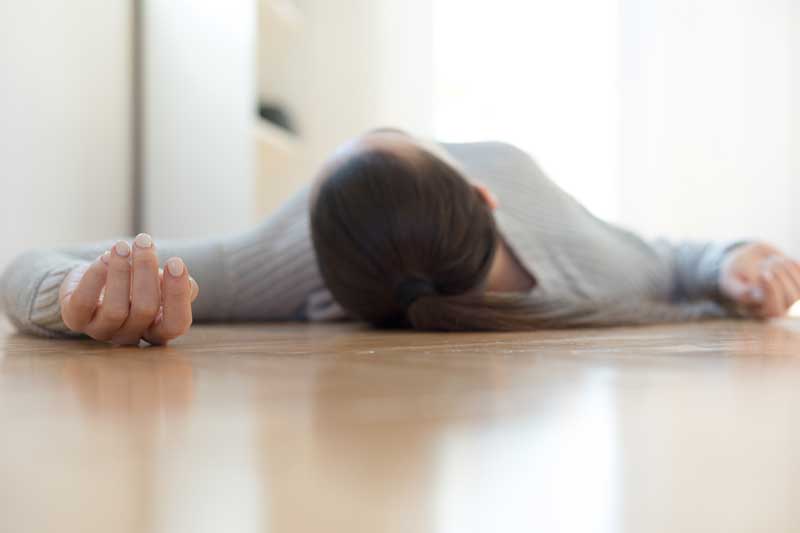
First aid and emergency interventions: syncope
Syncope is defined as a transient loss of consciousness. Syncope is the medical term for fainting or passing out. It is caused by a temporary drop in the amount of blood that flows to the brain
Syncope can happen if you have a sudden drop in blood pressure, a drop in heart rate, or changes in the amount of blood in areas of your body
If you pass out, you will likely become conscious and alert right away, but you may be feel confused for a bit.
It is usually due to a deficit of nutrients to the brain (decreased blood flow, typically by a fall in blood pressure, lasting 8-10 seconds.)
Recovery is usually complete and rapid, rarely lasting >1-2 minutes.
Longer suggests it is something much more than just syncope, such as a head injury that prolongs loss of consciousness.
The incidence of syncope increases with age, with a sharp rise > 70 years of age
This increased risk is due to age- and disease-related abnormalities that impair the ability to respond to physiologic stresses that would ordinarily not cause syncope in younger persons.
Syncope, in general, is divided into four major categories:
- Reflex syncope (neurological).
- Orthostatic syncope.
- Cardiac arrhythmias.
- Structural cardiopulmonary disease.
In the elderly, there are many causes for syncope, but usually they are cardiac or neurological in nature:
- Vasovagal syncope (the “common” faint, after sudden sight, sound, smell, or pain). It is a reflex syncope in which neural reflexes modify heart rate and blood pressure inappropriately.
- Carotid sinus hypersensitivity (more common in the elderly, due to head-turning, tumors, shaving, or tight collars).
- Arrhythmia (14%): AV block, cardiac pauses, ventricular tachyarrhythmias.
- Orthostatic hypotension (8-10%, associated with a decrease in systolic blood pressure of at least 20 mmHg or in diastolic blood pressure of at least 10 mmHg, upon assuming upright posture).
Aging is associated with an increased prevalence of orthostatic hypotension, probably due to changes in the vestibulosympathetic reflex. Other common causes are
- decreased intravascular volume,
- antidepressants, and
- antihypertensives (especially vasodilators.
- Cerebrovascular disease (TIA, stroke, etc.).
- Glucose variations (post-prandial).
- However, the cause is unknown in roughly a third of cases.
Complications of Syncope
Syncope is usually self-limited, and therefore recovery is complete.
However, loss of consciousness also causes loss of postural tone and collapse, which may cause injury from falls or worse, accidents involving motor vehicles or heavy machinery.
In the Field
In the field, your most likely interaction with an elderly patient who experiences syncope will be dealing with either the cause of (cardiac or neurological conditions) or the results of syncope (trauma from falls, accidents, etc.).
Besides the immediate needs of addressing any serious injuries, a quick assessment of level of consciousness and the rate and rhythm of the pulse are imperative to identify common neurological and cardiac causes.
As such, support for ABC (airway, breathing, circulation) is important, along with O2 when indicated and IV access en route. Your most important obligation for a transient loss of consciousness it to make sure it is transient!
Read also:
Emergency Live Even More…Live: Download The New Free App Of Your Newspaper For IOS And Android
Head Up Tilt Test, How The Test That Investigates The Causes Of Vagal Syncope Works
Cardiac Syncope: What It Is, How It Is Diagnosed And Who It Affects
New Epilepsy Warning Device Could Save Thousands Of Lives
Understanding Seizures And Epilepsy
First Aid And Epilepsy: How To Recognise A Seizure And Help A Patient
Neurology, Difference Between Epilepsy And Syncope


